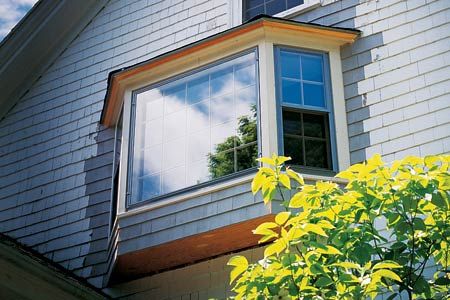Adding a second-story bay window can transform a dark, cramped space into a bright, airy retreat. This project enhances both the interior and exterior of your home, providing extra square footage and visual interest. While challenging, installing a bay window on the second floor is achievable for experienced do-it-yourself (DIY) enthusiasts or professionals in just three days. This guide will walk you through the process so you can create a beautiful and structurally sound addition to your home.
Challenges of Second-Story Bay Window Installation
Installing a bay window on the second floor is far from simple. The height increases safety concerns and complicates material handling. Structural support is crucial, as the window must withstand wind loads and its own weight without sagging. Waterproofing is also important, as any leaks can cause damage before they’re detected.
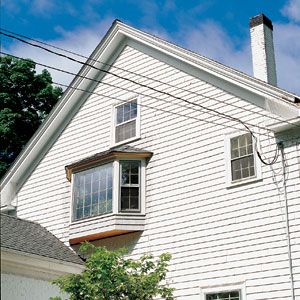
Bay Window Tools and Materials
Essential power tools for this project include a reciprocating saw, circular saw, drill/driver, and nail gun. These tools will help you cut the opening, frame the window, and secure materials.
Stock up on lumber for framing, plywood for sheathing, insulation, roofing materials, and exterior siding. Don’t forget fasteners, caulk, and paint. Purchase your bay window unit in advance to confirm it fits the planned opening.
Safety Considerations for Second-Story Work
Working at height requires extra precautions and fall protection to ensure a safe project. Rent or purchase sturdy scaffolding that reaches the full height of your work area. Ensure it’s set up on level ground and secured to the building. Use pump jacks for added flexibility in positioning your work platform.
Wear a hard hat, safety glasses, and non-slip footwear. Use a fall arrest system when working near the edge of the scaffolding, and keep the work area clear of debris to prevent tripping hazards.
Planning Your Bay Window Project
Before cutting into your wall, evaluate the existing structure. Determine if the wall is load-bearing and identify any electrical, plumbing, or HVAC systems that might be affected. Consult with a structural engineer if you’re unsure about the wall’s ability to support the new window.
Next, select a bay window style that complements your home’s architecture. Consider the angle of the side windows, the overall size, and the materials. A more traditional style might be appropriate for older homes, while modern homes can accommodate sleeker designs.
Day 1: Bay Window Preparation and Framing
For the first day of your project, focus on creating the opening for your new bay window and supporting it. Begin by marking the outline of your new window on the interior wall. Use a reciprocating saw to carefully cut through the wall, removing sheathing, studs, and exterior siding.
Once you’ve created the opening, install a sturdy header to support the weight above the window. This Old House’s Tom Silva and his brother Dick use a new header made of three 2x8s and two pieces of half-inch plywood. This robust header resists the outward pull of the window and prevents wall bulging.
It’s the header’s job to resist the outward pull of a window a foot and a half from the wall. Laden with one or two lounging humans and a half-dozen potted plants, a bay window without such reinforcement “can really make an old wall bulge,” Dick says.
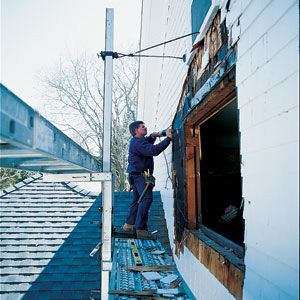
Day 2: Bay Window Installation and Roofing
The second day involves mounting the bay window unit and constructing its roof. Start by removing the window sashes to lighten the unit. Use a pump jack or scaffolding to lift the bay window into place.
For years, Tom hung his bays from steel strapping salvaged from lumber bundles. “It was a real challenge to get the straps taut and the whole thing level,” he says. He eagerly adopted a cable support system when it debuted in the late 1980s. This 150-pound factory-built bay will hang from two hidden quarter-inch steel cables, each rated for a 500-pound load, that snake up from the seat board behind the two front corners and attach to a beam above the header. “The big advantage of the cables is adjustability,” Tom says. “You can easily bring the whole unit up or down to make it perfectly level.”
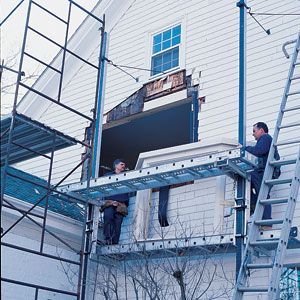
On the scaffold, Tom clears a swath of shingles around the opening and covers the exposed sheathing on both sides with eight-inch-wide splines of 15-pound builder’s felt. The felt offers protection should any rain sneak past the caulk, shingles, and trim that Tom will install after the window is in place.
With the opening framed and felted, Tom climbs down and turns his attention to the prefab bay. First, he and Dick remove the window sash to lighten their load. Then he snaps a chalk line across the headboard, the bay’s plywood ceiling, to indicate how far to shove the unit into the hole. Atop the headboard, he builds a ladder-like framework of 2x4s to stiffen it against the cables’ inward thrust. With the windowless bay loaded on the scaffolding, they slowly pump-jack the unit up to its new home and slide it into place. Tom fastens the framework to the header with his cordless drill/driver to stabilize the window.
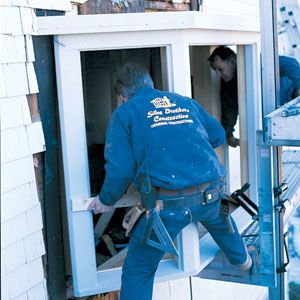
Next, it’s time to build a small hip roof over the bay window. Using three 2-bys attached to the sheathing, Tom outlines the roof’s shape on the wall. He makes sure the 2×6 ridge is screwed into an existing beam so he has a secure spot to anchor the cable tie-downs. Because the cables will pull on the tie-downs, Tom drills a pilot hole for each screw. If the hole’s diameter is slightly smaller than the screw shaft, “predrilling makes the screw grip better,” he says. Tom pulls the cables taut, then Dick fine-tunes the window level by twisting nuts beneath the seat board. “I bring it one-sixteenth above level,” Dick says. “That allows it to settle.”
Then, install rafters, sheathing, and a waterproof membrane. Cover it with shingles and install flashing at the eaves and peak. Tom doesn’t ventilate his bay roofs, noting that none have ever failed.
Day 3: Bay Window Finishing Touches
On the final day, you can complete exterior and interior finishes. Install new cedar shingles or siding around the bay window to match your home’s exterior. Apply caulk and paint-ready trim to ensure a weathertight seal.
Create your window seat by building a plywood-sheathed box mounted to the window’s underside. Tom says the seat should be around 17 inches off the floor. Finish with interior trim to match your room’s style.
Troubleshooting Common Second-Story Bay Window Installation Issues
During your DIY project, you may come across issues like uneven walls and water infiltration. Old houses often have walls that aren’t perfectly straight or level. Use shims to level the window unit and adjust the framing as needed to ensure a proper fit.
Pay extra attention to flashing and sealing around the window and roof. Use high-quality caulk and ensure all joints are properly overlapped to direct water away from the opening.
Enhancing Your Bay Window
Once installed, consider ways to maximize the beauty and functionality of your new bay window. For example, you can add cushions and pillows to your window seat to create a cozy reading nook. Install built-in storage underneath for extra functionality, and consider adding electrical outlets for convenient device charging.
Consider adding decorative brackets or corbels beneath the bay window to enhance your home’s curb appeal. Choose elements that complement your home’s architectural style for a cohesive look.
Our Conclusion
Building a second-story bay window is a challenging but rewarding project that can improve your home’s interior and exterior. With careful planning, the right tools, and attention to detail, this transformation can be completed in just three days. However, given the complexity and potential risks involved, homeowners may prefer to hire experienced professionals for this task.
